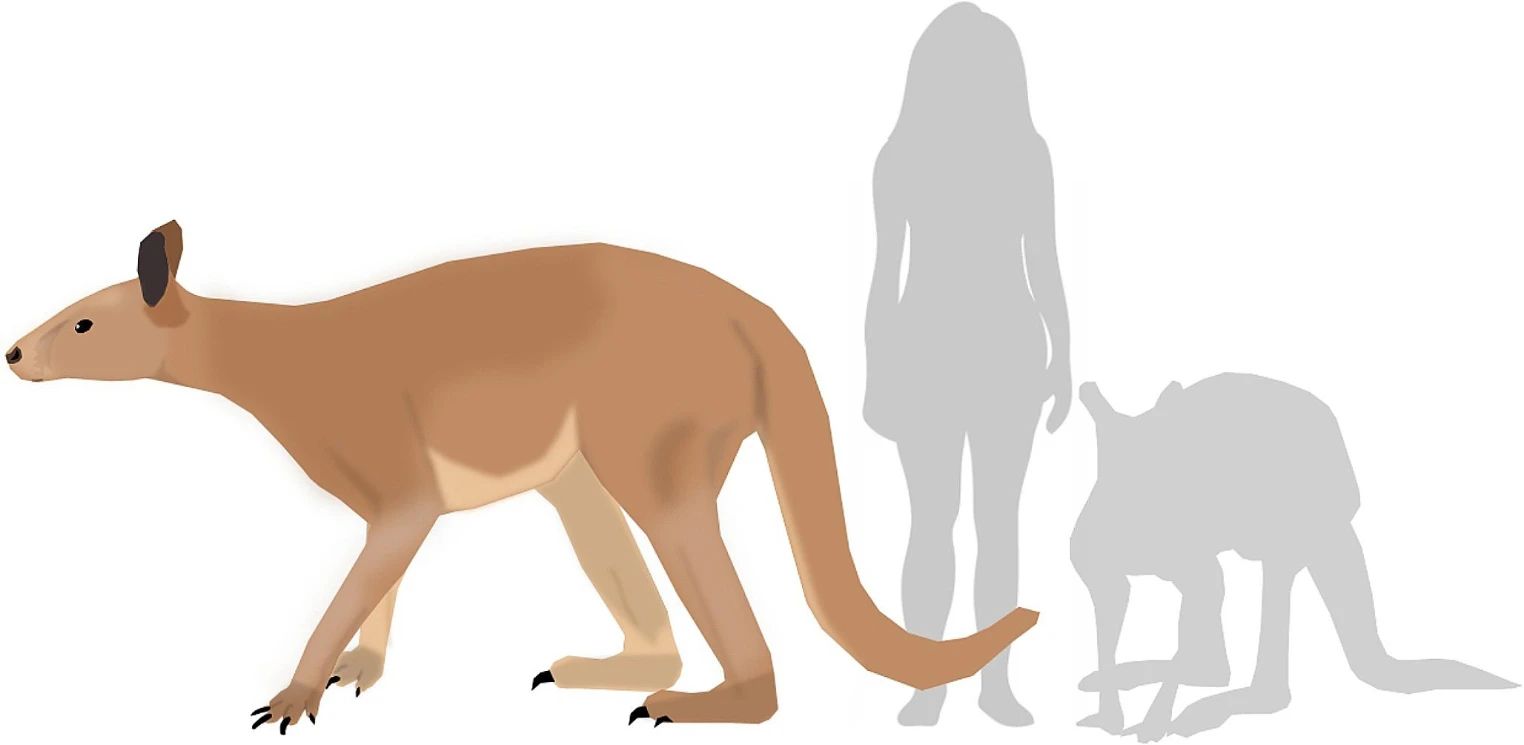The era of giant kangaroos that couldn't hop
Follow us on Google News (click on ☆)

New interpretation of Protemnodon next to a human and the largest current kangaroo, the red kangaroo (Osphranter rufus).
The Protemnodon, often referred to as "giant wallabies," lived approximately two and a half million to ten thousand years ago. Unlike modern kangaroos, these massive creatures did not hop but preferred to move on all fours, as demonstrated by research published in the Journal of Mammalian Evolution.
Billie Jones, the principal author of the study, highlights this hypothesis by analyzing the humerus anatomy in various mammals. Their findings indicate that the Protemnodon bore more weight on their forelimbs compared to modern kangaroos, suggesting a predominantly quadrupedal movement.
Previous research had already questioned these animals' ability to hop due to their ankle bones being unsuitable for such an exercise. The limb proportions of the Protemnodon, particularly their short feet, further support the idea that they mainly moved on all fours rather than hopping like their modern counterparts.
This study does not only examine limb proportions; it also considers other anatomical aspects to confirm the locomotion mode of these extinct kangaroos. This enriches our understanding of the taxonomic and locomotor diversity of Pleistocene Australian kangaroos.
Professor Christine Janis, supervising this study, had already demonstrated that sthenurines, an extinct subfamily of kangaroos, were bipedal walkers. The diversity in locomotion modes of Pleistocene kangaroos suggests a more varied range of habitats in Australia at that time, contrasting with the current arid climate.